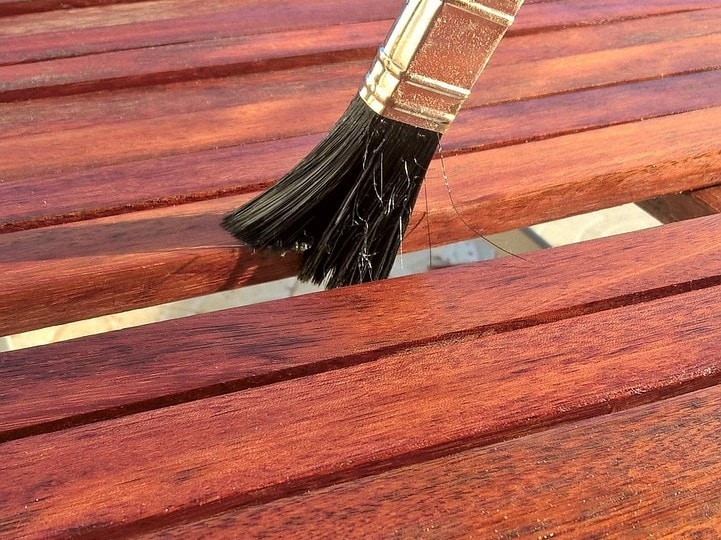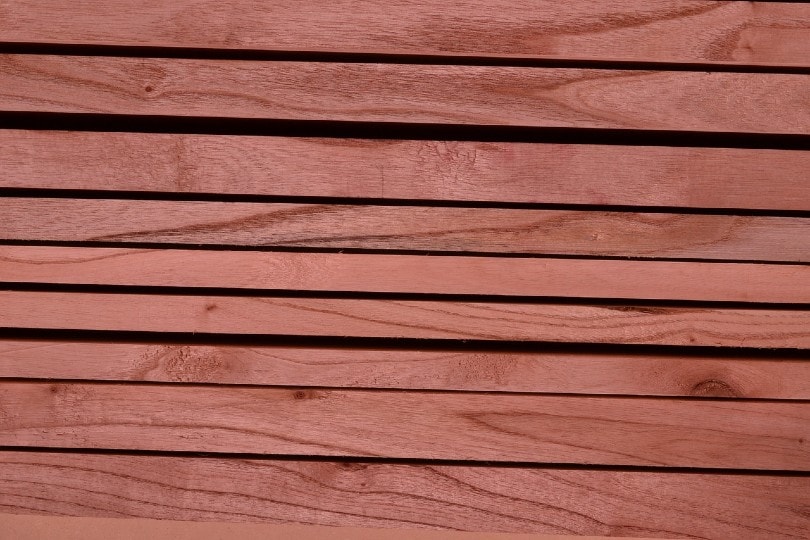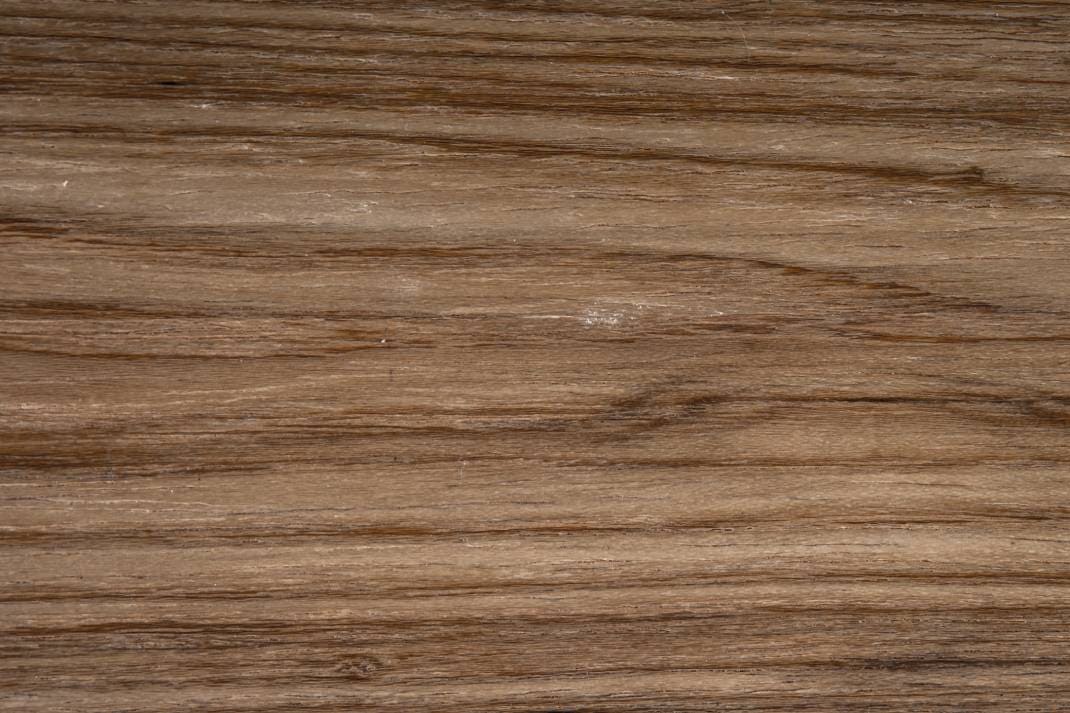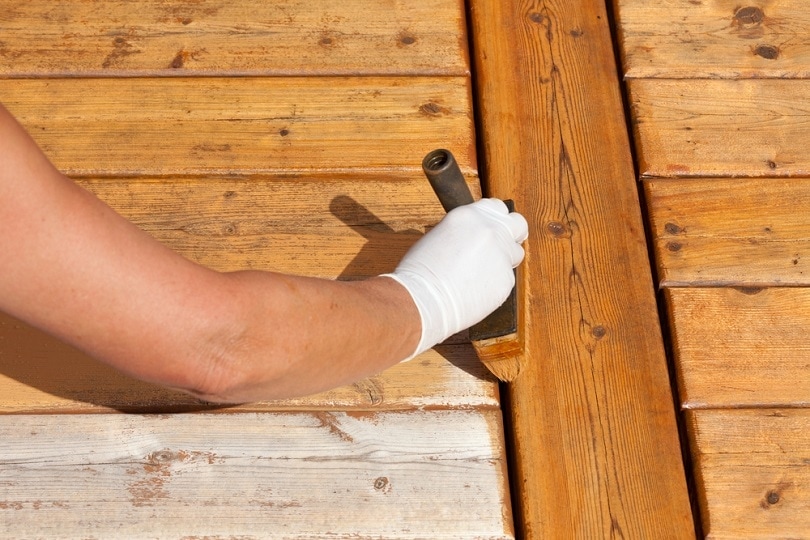What Is the Best Wood for Staining? What You Need To Know!
-
Pete Ortiz
- Last updated:

We know you’ve not stumbled upon this page by chance—you’re thinking about staining some wood but wondering which particular type will give you the best possible result. Well, even though we would have loved to give you a straightforward answer, it’s unfortunately not that simple.
People have different tastes and preferences. So it’s not that easy to figure out what an individual likes based on what we’ve seen other people go for.
But the good news is, we’ve done some research and were able to come up with a list of possible options that we believe would make you happy. Let’s dive in!
What Is a Stain?
The easiest way to describe it is to call it a gel or liquid product that has been designed to protect and add color to wood. Once you apply it to the wood’s surface, it will gradually penetrate the outer layer and create an even tone throughout its depth.
- The amount of stain applied
- And the method of application
If you decide to use it sparingly, the tone it ends up creating will definitely be lighter. But if you go all in, the penetration will be deeper, and the tone darker. If you don’t give it enough time to settle in before wiping it off, you’ll get a lighter shade.
The Best Wood for Staining
1. Ash Wood
| Color: | Beige, light-brown |
| Odor: | Piney |
| Grain: | Straight |
| Texture: | Coarse |
If we had to pick only one out of the four kinds of wood we’ve listed, we would pick ash. Ash is simply the best wood on the market, as it has a high stain absorption rate.
Penetrating its outer layer is almost too easy as it has pores and vessels that are relatively larger than those found in other woods. Those uniquely large pores and vessels are also the reason why the stain doesn’t create streaks and blotches during absorption.
There’s a catch, though. Before you start staining ash, you have to be certain that its undertone will perfectly match the color of the stain. Otherwise, if you go ahead and do your own thing without checking, you’ll end up with wood that looks old and hideous.
- Easy to stain
- Takes paint well
- Beautiful color
- Not easy to find the perfect stain color
2. Red Oak

| Color: | Reddish, amber |
| Odor: | Vinegar-like |
| Grain: | Straight |
| Texture: | Coarse |
You should know, it’s not always easy to tell which oak is which just by looking at them — unless you’re a botanist or a dendrologist. Even though red oak will naturally look rosier, and the white oak beige-to-brown, these trees usually have different colors throughout their stems.
Concerning its pore structure, when it comes to the red oak its pores are more open than those of white oak. That also means that if we’re talking about which oak absorbs stains faster, it’s the red one.
But as always, there’s a caveat. Assuming the goal is to show off the wood’s grain pattern, you’ll have to apply medium-tone colors. And the perfect examples of such colors are mahogany and rosewood.
- Large pores
- Incredible grain pattern
- Absorbs stain quicker
- Pungent smell
3. White Oak
| Color: | Beige light brown |
| Odor: | Vanilla |
| Grain: | Straight |
| Texture: | Coarse |
Implying that white oak is difficult to stain doesn’t mean that it’s the worst. Believe it or not, it’s a lot easier than most woods out there. We only sound hesitant because we are comparing it to red oak. But if you still fancy it, and you’re looking for the best possible result, you could always apply more than one coat.
The best stain to use if you want to change the color of white oak is an oil-based stain. A water-based stain or any other type of stain should only be an option if protecting the wood is the number one priority, and not changing its color.
- Beautiful grain pattern
- Smells good
- Takes stain better than most woods
- Low absorption rate compared to red oak
4. Cedar Wood

| Color: | Pinkish-red with purple tinges |
| Odor: | Camphoraceous |
| Grain: | Straight |
| Texture: | Coarse |
Cedar is one of those woods that don’t have to be treated to look good. Even when it’s fully weathered, you’ll still get a silvery-gray appearance that appeals to virtually anybody. The only reason why a lot of people often find themselves staining this wood is that it doesn’t gray evenly.
That means if this wood is the main construction material of a house, the areas that are more exposed to precipitation, sunlight, and all the other different weather elements, will show effects that are more pronounced.
Any light stain application will make the wood look gorgeous. But if you’re looking to go heavy or darker, you’ll have to be ready to deal with blemishes and knots.
- Easy to work with
- Aesthetically pleasing
- Great with a lighter application
- Doesn’t gray evenly
- Not suitable for darker stains
Types of Wood Stain
Oil-based
Most of the oil-based stains that we currently have on the market have been formulated using linseed oil. They’ll deeply penetrate your wood and form a thick finish that makes them ideal for projects that demand extra protection.
“Thick” is not the only word we would use to describe that finish, as we’ve also taken note of the fact that they are all richly colored. In addition, the stains are slow drying, making it possible to pull off a smoother finish.
Water-based
There are only two reasons as to why anybody would look for a water-based stain. One, they want a stain that dries off faster than an oil-based stain, and two, they are hoping to protect their wood project against mold and mildew.
Unfortunately, these types of stains aren’t so great at penetrating wood fibers. So if you want to get that rich color, you’ll have to apply more than one coat. Also, try to be gentle with your strokes while applying the product. You don’t want to find visible stroke marks showing once you’re done.

Gel-based
Speaking of strokes, they are the reason why gel-based stains were produced. You see, when you’re using a gel-based stain, you don’t have to worry about how gentle or brutal you are with the brushing. You don’t have to worry about it because gel-based stains can only be applied using rags.
How dark or light the shade looks will depend on how you rub the stain into the wood. If you rub harder, you’ll get a darker shade.
•You might also like:15 Wildflowers That Grow in Shade (with Pictures)
•You might also like:Can Boxwood Grow in the Shade? What You Need To Know
Final words
Not all types of woods will look great after staining. That’s why staining is reserved for particular woods. If you’re not sure how the wood you’re planning to use will react to a stain, consult an expert, or find a smaller piece to experiment with.
Featured Image Credit: Counselling, Pixabay
Contents



